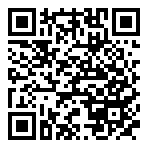Chapter 58
T
he coyly nicknamed explosive Key4 had been developed by Special Forces specifically for opening locked doors with minimal collateral damage. Consisting primarily of cyclotrimethylenetrinitramine with a diethylhexyl plasticizer, it was essentially a piece of C-4 rolled into paper-thin sheets for insertion into doorjambs. In the case of the library’s reading room, the explosive had worked perfectly.Operation leader Agent Turner Simkins stepped over the wreckage of the doors and scanned the massive octagonal room for any signs of movement. Nothing.
“Kill the lights,” Simkins said.
A second agent found the wall panel, threw the switches, and plunged the room into darkness. In unison, all four men reached up and yanked down their night-vision headgear, adjusting the goggles over their eyes. They stood motionless, surveying the reading room, which now materialized in shades of luminescent green inside their goggles.
The scene remained unchanged.
Nobody made a dash for it in the dark.
The fugitives were probably unarmed, and yet the field team entered the room with weapons raised. In the darkness, their firearms projected four menacing rods of laser light. The men washed the beams in all directions, across the floor, up the far walls, into the balconies, probing the darkness. Oftentimes, a mere glimpse of a laser-sighted weapon in a darkened room was enough to induce instant surrender.
Apparently not tonight.
Still no movement.
Agent Simkins raised his hand, motioning his team into the space. Silently, the men fanned out. Moving cautiously up the center aisle, Simkins reached up and flipped a switch on his goggles, activating the newest addition to the CIA’s arsenal. Thermal imaging had been around for years, but recent advances in miniaturization, differential sensitivity, and dual-source integration had facilitated a new generation of vision enhancing equipment that gave field agents eyesight that bordered on superhuman.
We see in the dark. We see through walls. And now . . . we see back in time.
Thermal-imaging equipment had become so sensitive to heat differentials that it could detect not only a person’s location . . . but their previous locations. The ability to see into the past often proved the most valuable asset of all. And tonight, once again, it proved its worth. Agent Simkins now spied a thermal signature at one of the reading desks. The two wooden chairs luminesced in his goggles, registering a reddish-purple color, indicating those chairs were warmer than the other chairs in the room. The desk lamp’s bulb glowed orange. Obviously the two men had been sitting at the desk, but the question now was in which direction they had gone.
He found his answer on the central counter that surrounded the large wooden console in the middle of the room. A ghostly handprint, glowing crimson.
Weapon raised, Simkins moved toward the octagonal cabinet, training his laser sight across the surface. He circled until he saw an opening in the side of the console. Did they really corner themselves in a cabinet? The agent scanned the trim around the opening and saw another glowing handprint on it. Clearly someone had grabbed the doorjamb as he ducked inside the console.
The time for silence was over.
“Thermal signature!” Simkins shouted, pointing at the opening. “Flanks converge!”
His two flanks moved in from opposite sides, effectively surrounding the octagonal console.
Simkins moved toward the opening. Still ten feet away, he could see a light source within. “Light inside the console!” he shouted, hoping the sound of his voice might convince Mr. Bellamy and Mr. Langdon to exit the cabinet with their hands up.
Nothing happened.
Fine, we’ll do this the other way.
As Simkins drew closer to the opening, he could hear an unexpected hum rumbling from within. It sounded like machinery. He paused, trying to imagine what could be making such a noise in such a small space. He inched closer, now hearing voices over the sound of machinery. Then, just as he arrived at the opening, the lights inside went out.
Thank you, he thought, adjusting his night vision. Advantage, us.
Standing at the threshold, he peered through the opening. What lay beyond was unexpected. The console was less of a cabinet than a raised ceiling over a steep set of stairs that descended into a room below. The agent aimed his weapon down the stairs and began descending. The hum of machinery grew louder with every step.
What the hell is this place?
The room beneath the reading room was a small, industrial-looking space. The hum he heard was indeed machinery, although he was not sure whether it was running because Bellamy and Langdon had activated it, or because it ran around the clock. Either way, it clearly made no difference. The fugitives had left their telltale heat signatures on the room’s lone exit—a heavy steel door whose keypad showed four clear fingerprints glowing on the numbers. Around the door, slivers of glowing orange shone beneath the doorjamb, indicating that lights were illuminated on the other side.
“Blow the door,” Simkins said. “This was their escape route.”
It took eight seconds to insert and detonate a sheet of Key4. When the smoke cleared, the field-team agents found themselves peering into a strange underground world known here as “the stacks.”
The Library of Congress had miles and miles of bookshelves, most of them underground. The endless rows of shelves looked like some kind of “infinity” optical illusion created with mirrors.
A sign announced
TEMPERATURE-CONTROLLED ENVIRONMENT
Keep this door closed at all times.
Simkins pushed through the mangled doors and felt cool air beyond. He couldn’t help but smile. Could this get any easier? Heat signatures in controlled environments showed up like solar flares, and already his goggles revealed a glowing red smear on a banister up ahead, which Bellamy or Langdon had grabbed on to while running past.
“You can run,” he whispered to himself, “but you can’t hide.”
As Simkins and his team advanced into the maze of stacks, he realized the playing field was tipped so heavily in his favor that he would not even need his goggles to track his prey. Under normal circumstances, this maze of stacks would have been a respectable hiding place, but the Library of Congress used motion-activated lights to save energy, and the fugitives’ escape route was now lit up like a runway. A narrow strip of illumination stretched into the distance, dodging and weaving as it went.
All the men ripped off their goggles. Surging ahead on well-trained legs, the field team followed the trail of lights, zigging and zagging through a seemingly endless labyrinth of books. Soon Simkins began seeing lights flickering on in the darkness up ahead. We’re gaining. He pushed harder, faster, until he heard footsteps and labored breathing ahead. Then he saw a target.
“I’ve got visual!” he yelled.
The lanky form of Warren Bellamy was apparently bringing up the rear. The primly dressed African American staggered through the stacks, obviously out of breath. It’s no use, old man.
“Stop right there, Mr. Bellamy!” Simkins yelled.
Bellamy kept running, turning sharp corners, weaving through the rows of books. At every turn, the lights kept coming on over his head.
As the team drew within twenty yards, they shouted again to stop, but Bellamy ran on.
“Take him down!” Simkins commanded.
The agent carrying the team’s nonlethal rifle raised it and fired. The projectile that launched down the aisle and wrapped itself around Bellamy’s legs was nicknamed Silly String, but there was nothing silly about it. A military technology invented at Sandia National Laboratories, this nonlethal “incapacitant” was a thread of gooey polyurethane that turned rock hard on contact, creating a rigid web of plastic across the back of the fugitive’s knees. The effect on a running target was that of jamming a stick into the spokes of a moving bike. The man’s legs seized midstride, and he pitched forward, crashing to the floor. Bellamy slid another ten feet down a darkened aisle before coming to a stop, the lights above him flickering unceremoniously to life.
“I’ll deal with Bellamy,” Simkins shouted. “You keep going after Langdon! He must be up ahead some—” The team leader stopped, now seeing that the library stacks ahead of Bellamy were all pitch-black. Obviously, there was no one else running in front of Bellamy. He’s alone?
Bellamy was still on his chest, breathing heavily, his legs and ankles all tangled with hardened plastic. The agent walked over and used his foot to roll the old man over onto his back.
“Where is he?!” the agent demanded.
Bellamy’s lip was bleeding from the fall. “Where is who?”
Agent Simkins lifted his foot and placed his boot squarely on Bellamy’s pristine silk tie. Then he leaned in, applying some pressure. “Believe me, Mr. Bellamy, you do not want to play this game with me.”



 ePub
ePub A4
A4